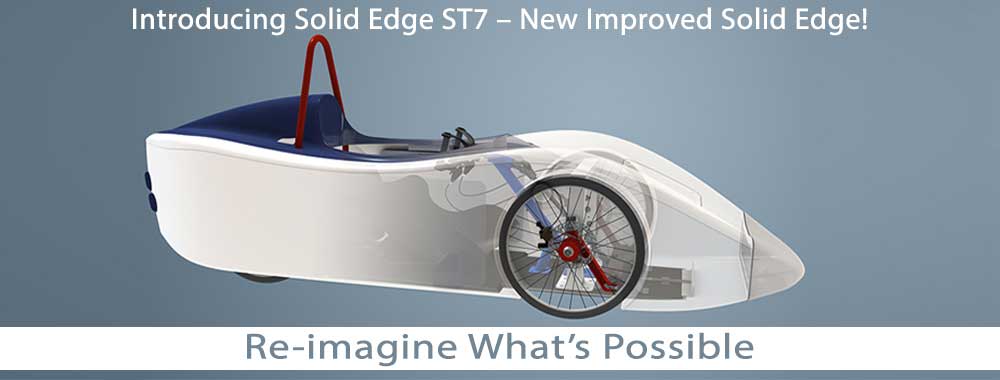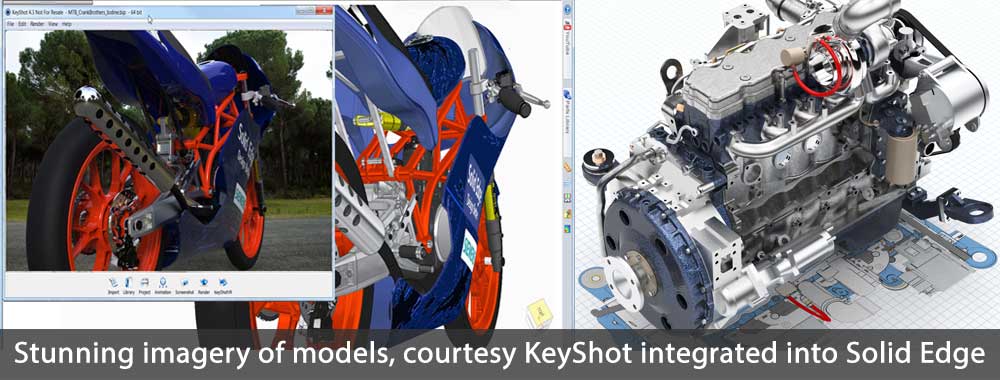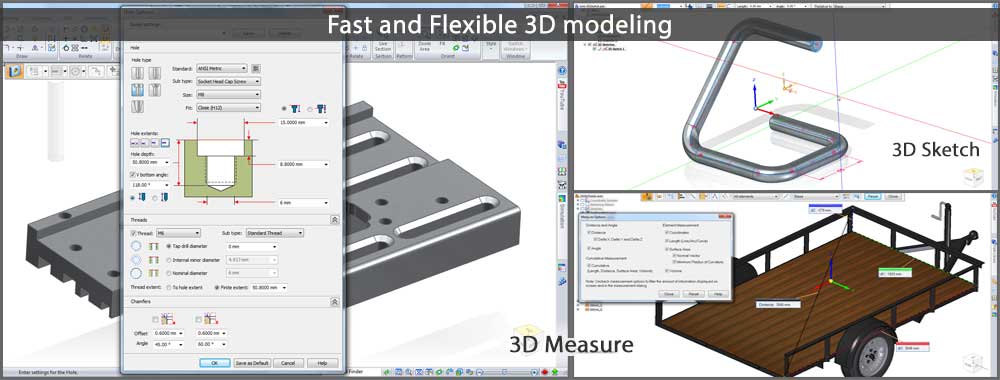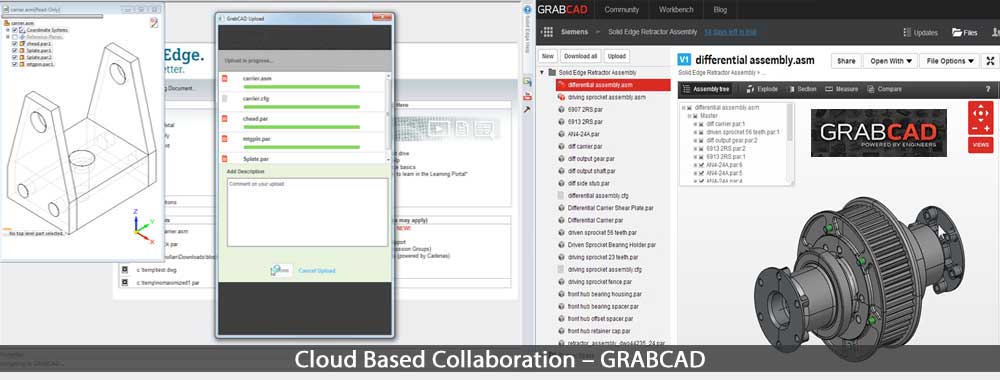Solid Edge
Solid Edge® software is a complete hybrid 2D/3D CAD system that uses synchronous technology for accelerated design, faster revisions and better imported re-use to help companies design better. Solid Edge offers different applications to suit your needs. From powerful 2D Drafting to an advanced 3D system – complete with assembly design, automated drawing production, simulation and assembly applications – Solid Edge is the most comprehensive and scalable digital product development system from Siemens that is designed for mainstream engineering.
Secrets to Design Better:
Synchronous technology for fast/flexible modeling: Solid Edge leverages synchronous technology, enabling your company to deliver breakthrough designs. Designers can accelerate model creation with out engaging in design preplanning. They also are able to perform faster ECO edits by eliminating model regeneration, while increasing the re-use of imported 2D or 3D data. This unique technology helps you get products to market faster, service customer needs better and reduce engineering design costs.
Better transition and re-use from 2D or 3D: Solid Edge has proven successful in helping companies reduce engineering costs through better re-use of 2D and 3D data. Imported assembly layouts can drive 3D product design where interference checking can solve fit and position problems before manufacturing. Synchronous technology can edit imported 3D models, reducing the need to redesign. Advanced sheet metal design: Solid Edge provides a complete sheet metal design system from modeling, flattening and manufacturing documentation. Create straight brake, rolled or transition type components complete with flanges, holes, relief and corner options. You can validate designs for manufacturing, document the bend sequence and send flat pattern DXF files directly to production. Get your sheet metal designs to market faster with Solid Edge.
Complete digital prototyping: With Solid Edge you can build entire 3D digital prototypes and optimize your designs before production. You can design assemblies with machined, cast or stylized components and leverage process-specific applications to simplify frame, piping, tube, wiring, weldment and mold tooling design. You can use digital prototyping to show how your products will operate and appear in real life through exploded views, photorealistic renderings and animations. With more accurate digital prototypes, you can achieve higher levels of product quality in less time.
Optimized for massive assemblies: Efficient display management tools, such as configurations and design zones, help you focus on relevant parts and tasks; this is ideal for concurrent design. Modeling performance receives a significant boost from an inactive lightweight mode that frees memory of unused data. Support for 64-bit computers lets you open and work with your largest designs faster and more efficiently. Solid Edge helps you create and manage all of your assemblies, including designs that range in complexity from 1 to more than 100,000 parts.
Production-proven 2D drafting: High quality products begin with highquality drawings and Solid Edge is the industry’s best choice for creating accurate, high quality 2D drawings from 3D models. You can automatically create a wide variety of views including standard, auxiliary, section, detail, broken and isometric views. Detailing is fast since Solid Edge supports dimension retrieval while enabling you to automatically generate parts lists with balloons. Drawings are always kept up to date, alerting you to any change. Solid Edge provides industry-standard symbols to speed up the creation of layouts and schematics. Accurate drawings that are automatically kept up to date help keep your production lines running smoothly.
Integrated design analysis: Reducing engineering costs can be done by simulating product operation requirements before manufacturing. Solid Edge offers an Engineering Reference tool that automates the design of standard components such as shafts, beams and cams. Solid Edge solves complex fit and position using simple 2D free-body diagrams with Goal Seek. Solid Edge Simulation helps you analyze 3D parts and assemblies, and synchronous technology lets you refine designs faster. For advanced simulation needs, Siemens PLM Software’s Femap™ software is ideal for the multidiscipline engineer or analyst. These simulation tools help you reduce the time and cost needed to build and test expensive physical prototypes.
Collaboration across the supply chain: Solid Edge offers a full suite of tools that lets designers author, edit, distribute and explore design alternatives. Use XpresReview to distribute compact design review packages including requirements documents, spreadsheets, 2D and 3D models. The industry standard JT™ viewing format keeps review files small while allowing viewing and redlining. When design concepts need to be explored, synchronous technology lets your design team make rapid and flexible edits.
Transparent design and data management: One of the most important aspects of any design process is the ability to manage data across the entire product development cycle. Solid Edge offers transparent and integrated data management capabilities to suit every customer. The Microsoft SharePointbased Solid Edge SP design management solution provides easy vaulting and retrieval of Solid Edge files and related design data, together with a visual approach to managing linked documents, product structures and projects. Alternatively, with use of the Solid Edge Embedded Client, customers can integrate Solid Edge with Teamcenter® software and access comprehensive PLM capabilities that help you deliver increasingly complex products to market while maximizing productivity and streamlining global operations.
PLM with the Velocity Series: To help you achieve maximum productivity, the Siemens PLM Software Velocity Series portfolio offers a comprehensive family of modular, yet integrated solutions that leverage the industry’s best practices to provide significant breakthroughs in ease-of-use and solution deployment including:
• Solid Edge – 3D design for faster time-to-market while reducing engineering costs
• Femap – Simulation to reduce the need for physical testing, resulting in lower costs
• CAM Express – NC programming for maximizing machine tool utilization














